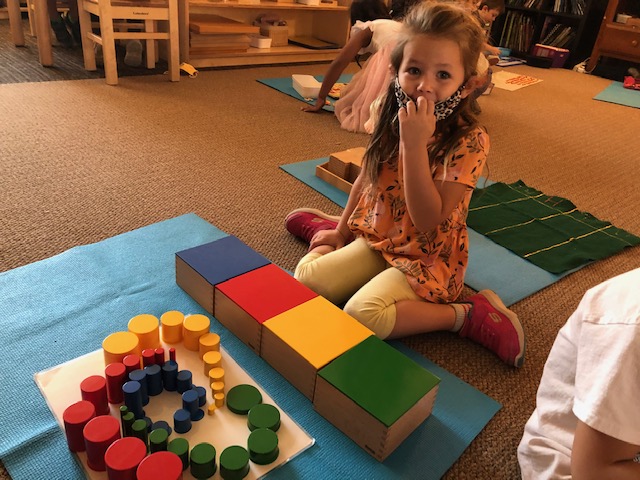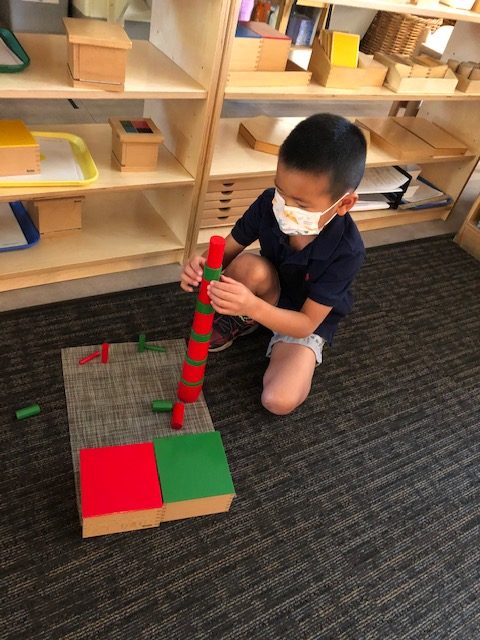At the beginning of every month, various cultural, art, and science works are replaced on the shelves. The materials reflect the particular theme and subject matter found in our curriculum. For instance, this month we introduced the concept of “living and nonliving” along with the terms, “land, air and water” in our science area.
One of the areas that gets a big monthly update is called Practical Life. The Practical Life area offers students a chance to develop practical skills which help children do things in life like cleaning up a spill with a broom and dustpan, opening and closing containers, slicing a banana and serving sections to friends. Tweezing and pouring jobs are designed to build coordination and strength in little fingers to correctly grasp a pencil and learn to write comfortably.

Ever wonder what the themes are for the month? We invite you to look at the calendar your child brings home at the start of each month. A small art project (tied to the current theme) is made by the children and attached to the calendar. You will notice on the calendars we include the monthly themes and also highlight important dates of events on campus. The year long curriculum may also be found in the parent information packet we distributed during parent orientation.
















